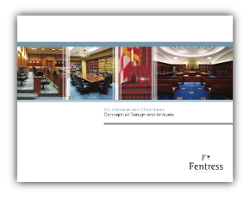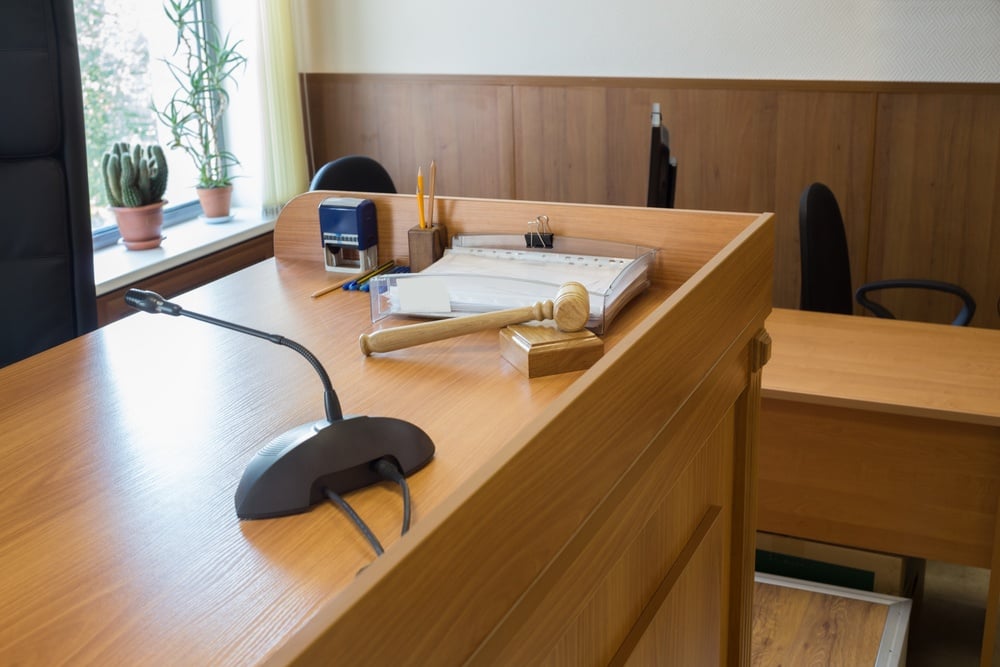I recently received a comment on my Justice in the Dark post regarding natural light, which helps to create a more pleasant environment in a courtroom while also reducing energy costs. I briefly responded that I couldn’t agree more! Now, let me take the opportunity to elaborate.
Sunlight - a Basic Human Need
Several months ago, I wrote a piece about considering basic human needs in designing new office environments. In the article, I explained that many basic needs go back to the dawn of Homo Sapiens.
As Ron Freidman, Ph.D., points out in his book, The Best Place to Work, most evolutionary psychologists believe that “many of our current design preferences can be traced back to our shared history on the savanna … as hunter-gatherers.” He further points out that these preferences are largely unconscious. Friedman contends that we prefer safe and pleasurable environments, where we function better, over those that seem dangerous and inhibit our ability to function normally. One example is our preference for spaces illuminated by natural light.
The courtroom photo below was taken in one of five similarly designed courtrooms in a recently constructed courthouse. The design of the courthouse emphasized the use of direct, natural light. However, the location of the courthouse was conducive to achieving this extensive use of windows. Although it was too soon for the court to reach any conclusions about any effect the day-lit courtrooms might have on the conduct or outcomes of the proceedings, all agreed that the courtrooms provided pleasant workspaces.

Courtroom with extensive use of direct daylighting
The courtroom pictured below also achieved a high level of natural light and a similarly high level of satisfaction among judges and staff by “borrowing” indirect light from the glass-walled lobby at the rear of the courtroom.

Courtroom with indirect daylight from the lobby
In addition to the environmental quality advantages presented by using natural light, the value of energy savings and sustainability can be considerable. The building managers for the Iowa and Southern California courthouses assured me that the courtrooms used far less energy than a more traditional design that compensated for the lack of daylight with large globe light fixtures.
A Balance with Natural Light and Security
Unfortunately, in some courtrooms, windows may not be practical at all. It principally comes down to balancing environmental quality and security.
As I have stressed in the past, security is paramount – no more so than in the courtroom. Court security officers go to great lengths to ensure a secure and protected environment within the courtroom when proceedings are in session. Permitting direct sightlines into a courtroom from a nearby public space or an adjacent building should be avoided.
The emphasis on securing the courtroom environment often results in some limitations on the extent of windows that may be used and on the resultant natural light that can enter a courtroom. In the Iowa courthouse, the courtrooms are all located at the upper levels of the building, and all face an adjacent river, leaving no opportunity for direct sightlines into the brightly lit courtrooms.
The courtroom pictured above is in a courthouse located in the middle of an urban area. It is surrounded by high- and mid-rise office buildings, creating considerable opportunity for direct sightlines. The “borrowed” light design of the courtrooms successfully balances the desire for natural light with the need for security.
At the other end of the spectrum, we have a courtroom with large expanses of windows facing the public sidewalk and street. To compensate, window blinds must be used to hide the judge’s bench and jury box from public view. This effectively negates the possibility of using natural light during court proceedings.

Exterior view of the courtroom at street level

Interior view of courtroom showing the use of blinds to restrict visibility
A Balance with Technology
I have also noted in several of my earlier courthouse postings that trial and hearing proceedings continually expand their use of video technology to present evidence and connect to remote facilities. When designing a courtroom that relies on natural light, controlling light levels to ensure proper visibility of video devices must also be considered. This is evident in the Iowa courtrooms, where an automated window blind system is available on all windows. The San Diego courtrooms accomplish this by using frosted glass above the entry doors at the rear of the courtroom.
There is little doubt that natural light is natural to humans. Its use in a courtroom is highly recommended where security conditions allow. When accompanied by carefully designed accommodations for security and technology, a well-lit courtroom can be the visual and functional focus of the courthouse.
_______________________________________________________________
Get our Courtrooms and Chambers: Conceptual Design and Analysis eBook NOW!




.jpg)
.jpg)
.jpg)
.jpg)
.jpg)
.jpg)


.jpg)
-1.jpg)
.jpg)
.jpg)
.jpg)
.jpg)
.jpg)
.jpg)

